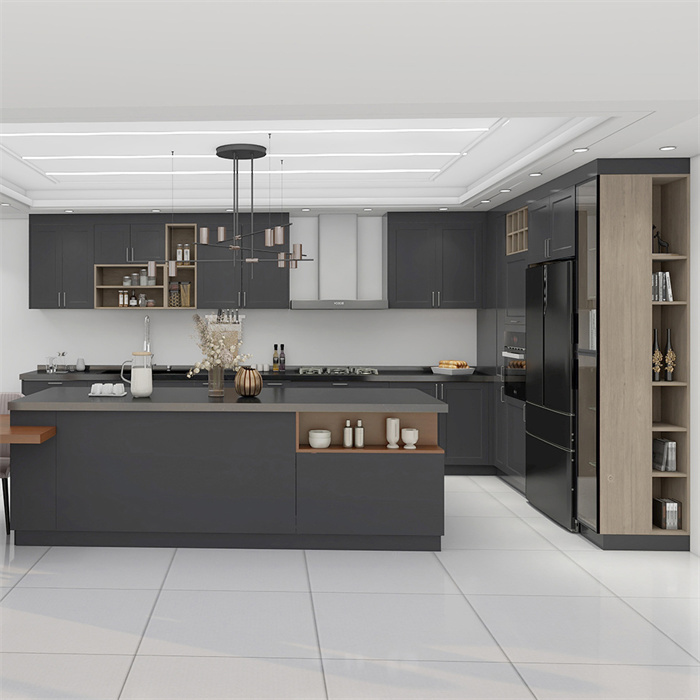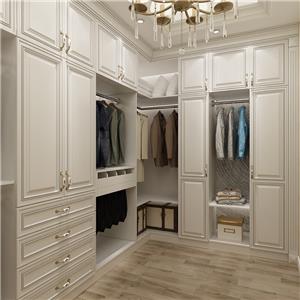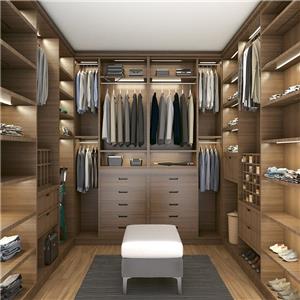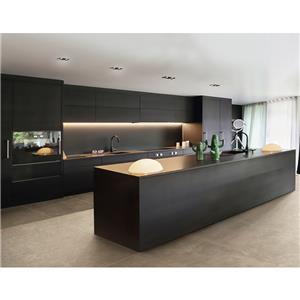Decoding Kitchen Cabinets Prices: A Comprehensive Guide
Decoding Kitchen Cabinets Prices: A Comprehensive Guide
Introduction
When embarking on a kitchen renovation project, one of the most crucial aspects to consider is the cost of kitchen cabinets. Kitchen cabinets not only provide essential storage but also significantly contribute to the overall aesthetic of the kitchen. Understanding the factors that influence kitchen cabinets prices is essential for making an informed decision that aligns with your budget and requirements. In this in - depth article, we will explore the various elements that determine the cost of kitchen cabinets, different pricing models, and how to find the best value for your investment.
Factors Affecting Kitchen Cabinets Prices
Material
Solid Wood
Solid wood cabinets are highly sought - after for their natural beauty and durability. Woods such as oak, maple, cherry, and walnut are commonly used. Oak, with its distinct grain pattern, offers a classic look and is relatively affordable among solid woods, with prices starting from around \(150 - \)300 per linear foot for basic styles. Maple, known for its smooth texture, is slightly more expensive, ranging from \(200 - \)400 per linear foot. Cherry, which darkens over time to a rich, warm color, and walnut, with its luxurious appearance, can cost upwards of \(300 - \)600 per linear foot or more, depending on the quality and finish.
The cost of solid - wood cabinets is influenced by the type of wood, its origin, and the quality of the lumber. Higher - grade woods with fewer knots and a more consistent grain will command a higher price. Additionally, the finish applied to the wood, whether it's a natural stain or a painted finish, can also affect the cost.
Plywood and MDF (Medium - Density Fiberboard)
Plywood, made by gluing together multiple layers of thin wood veneers, is a cost - effective alternative to solid wood. It is strong, stable, and less likely to warp. Plywood cabinets typically range from \(100 - \)200 per linear foot. The cost can vary based on the number of layers, the quality of the veneers, and the finish.
MDF, composed of wood fibers and resin, has a smooth, uniform surface. It is an affordable option, with prices starting at around \(80 - \)150 per linear foot. MDF is often used for cabinet doors and drawer fronts, especially in modern, flat - panel designs. However, it may not be as durable as solid wood or plywood in high - moisture areas.
Laminate
Laminate cabinets are popular for their versatility and cost - effectiveness. Laminate comes in a wide range of colors, patterns, and textures, mimicking the look of wood, stone, or other materials. Basic laminate cabinets can start as low as \(50 - \)120 per linear foot. The cost can increase depending on the quality of the laminate, with high - end laminates that offer better scratch - and - stain - resistance costing more.
Laminate is also available in different finishes, such as matte, semi - gloss, or high - gloss. High - gloss laminate, which gives a sleek, modern look, may be priced slightly higher than matte or semi - gloss options.
Stainless Steel
Stainless - steel cabinets are known for their durability, resistance to corrosion, and modern, industrial look. They are often used in commercial - style kitchens or modern homes. Stainless - steel cabinets can cost anywhere from \(200 - \)500 per linear foot or more, depending on the thickness of the steel, the quality of the construction, and any additional features.
The cost of stainless - steel cabinets can be influenced by factors such as the grade of stainless steel (e.g., 304 or 316), which affects its corrosion resistance, and the finish, whether it's brushed, polished, or textured.
Size and Layout
Cabinet Dimensions
The size of the cabinets is a significant factor in determining the price. Larger cabinets, such as tall pantry cabinets or extra - wide base cabinets, require more materials and labor to construct, thus increasing the cost. For example, a standard 30 - inch wide base cabinet may cost around \(200 - \)400, while a 48 - inch wide base cabinet could cost \(300 - \)600 or more.
Wall cabinets also follow a similar pattern, with taller and wider wall cabinets being more expensive. Additionally, custom - sized cabinets, which are tailored to fit specific spaces, often come at a premium. If you need cabinets with non - standard dimensions, be prepared to pay 20 - 50% more than for standard - sized units.
Kitchen Layout Complexity
The layout of your kitchen can impact the cost of cabinets. A simple, straight - line galley kitchen will generally require fewer cabinets and less complex installation, resulting in a lower cost. In contrast, an L - shaped or U - shaped kitchen may need more cabinets, including corner cabinets, which can be more expensive to design and install.
Islands in the kitchen also add to the cost. Cabinets installed on an island may be more elaborate in design and may require additional features such as electrical outlets or specialized storage. The cost of an island with cabinets can range from \(1,500 - \)5,000 or more, depending on its size, materials, and features.
Style and Design
Door Styles
The style of the cabinet doors can have a significant impact on the price. Simple, flat - panel doors are generally more affordable, with prices starting at around \(30 - \)80 per door. Shaker - style doors, which feature a flat - panel center with a frame, are a popular and moderately priced option, costing around \(50 - \)120 per door. Raised - panel doors, which add a more traditional and elegant look, can cost \(80 - \)200 per door or more, depending on the complexity of the design and the materials used.
More elaborate door styles, such as those with decorative moldings, carvings, or glass inserts, will be even more expensive. For example, doors with intricate hand - carved details can cost several hundred dollars per door.
Hardware and Accessories
The choice of hardware, such as handles, knobs, and hinges, can also affect the cost. Basic, plain - jane hardware may cost only a few dollars per piece, while high - quality, designer - style hardware can cost upwards of \(10 - \)50 or more per piece. Soft - close hinges and drawer glides, which add a touch of luxury and functionality, are also more expensive than standard hinges and glides.
Accessories like pull - out shelves, spice racks, wine racks, and lazy Susans can significantly increase the cost of the cabinets. A simple pull - out shelf may cost around \(50 - \)100, while a more elaborate, multi - tiered wine rack can cost \(200 - \)500 or more.
Brand and Quality
Reputation and Brand Recognition
Well - established and reputable brands often command higher prices for their kitchen cabinets. Brands that have built a name for themselves in terms of quality, craftsmanship, and customer service can charge a premium. For example, a set of cabinets from a top - tier brand like KitchenAid or Sub - Zero - Wolf can cost 30 - 50% more than cabinets from lesser - known brands.
These brands typically use high - quality materials, employ skilled craftsmen, and offer extensive warranties, which justify the higher price tag. However, it's important to note that some mid - range brands may also offer excellent quality at a more affordable price.
Quality of Construction
The quality of construction is a key determinant of price. Cabinets with solid - wood frames, dovetail joints in drawers, and high - quality adhesives and finishes will be more expensive than those with cheaper, less durable construction methods. For instance, cabinets with particleboard frames and stapled - together joints may be less expensive initially but are more likely to break down over time.
High - quality cabinets are also more likely to fit together precisely, have doors that close evenly, and offer smooth - functioning drawers, which contributes to their higher cost.
Pricing Models for Kitchen Cabinets
The Linear Foot or "Per - Foot" Pricing
How It Works
The linear foot pricing model is one of the most common ways to price kitchen cabinets. In this model, the cost is calculated based on the length of the cabinets. For example, if a base cabinet costs \(200 per linear foot and you need 10 feet of base cabinets, the cost of the base cabinets alone would be \)2,000.
This pricing model usually includes the cabinet box, doors, and sometimes basic hardware. However, it's important to note that additional features such as pull - out shelves, specialized hardware, or upgraded finishes may be charged separately.
Advantages and Disadvantages
The advantage of the linear - foot pricing model is its simplicity. It's easy to understand and compare prices between different suppliers. You can quickly get an estimate of the cost based on the length of the cabinets you need.
However, one of the drawbacks is that it may not accurately reflect the complexity of the design or the cost of individual components. For example, a corner cabinet or a cabinet with a unique shape may require more materials and labor to construct but may be priced the same per linear foot as a standard, straight - forward cabinet.
The Unit - Based Pricing
How It Works
Unit - based pricing, also known as per - cabinet or per - piece pricing, involves pricing each individual cabinet unit separately. Each type of cabinet, such as a base cabinet, wall cabinet, or tall cabinet, has a specific price based on its size, style, and materials. For example, a small 12 - inch wide wall cabinet may cost \(150, while a large 36 - inch wide base cabinet could cost \)400.
This pricing model allows for more precise pricing based on the specific cabinets you need. It also makes it easier to add or remove individual cabinets from your order without affecting the overall price calculation too much.
Advantages and Disadvantages
The advantage of unit - based pricing is its transparency. You know exactly how much each cabinet costs, and it's easier to budget for specific items. It also allows for greater flexibility in customizing your kitchen cabinet layout.
The downside is that it can be more difficult to calculate the total cost for a large number of cabinets, especially if you have a complex layout. Additionally, some suppliers may charge more for custom - sized or specialty cabinets when using this pricing model.
The Package or "Complete Set" Pricing
How It Works
Package pricing involves selling a complete set of kitchen cabinets, typically including base cabinets, wall cabinets, and sometimes tall cabinets, as a single unit. These sets are often pre - designed and come in standard sizes and styles. For example, a basic kitchen cabinet set for a small kitchen may cost \(3,000 - \)5,000.
Package pricing can be convenient as it provides a one - stop solution for your kitchen cabinet needs. It may also include some additional features or accessories, such as basic hardware or a limited number of pull - out shelves.
Advantages and Disadvantages
The advantage of package pricing is the cost savings. Suppliers often offer a discount when you purchase a complete set, which can be more cost - effective than buying individual cabinets. It also simplifies the decision - making process as you don't have to worry about mixing and matching different cabinets.
However, the drawback is that the set may not be fully customizable to your specific needs. You may have to make some compromises in terms of size, style, or features to fit the package. Additionally, if you need to replace or add a single cabinet in the future, it may be more difficult to match it with the existing set.
Comparing Prices: Brand - to - Brand and Supplier - to - Supplier
Comparing Popular Brands
High - End Brands
High - end brands like Poggenpohl and SieMatic are known for their luxurious, high - quality kitchen cabinets. Poggenpohl cabinets can start at around \(5,000 - \)10,000 or more for a basic kitchen setup and can go well into the tens of thousands for more elaborate designs. These cabinets often feature the finest materials, innovative designs, and top - notch craftsmanship.
SieMatic, another high - end brand, offers a range of modern and contemporary cabinet designs. Their prices typically start at around \(4,000 - \)8,000 for a small kitchen and can increase significantly depending on the customization and features.
Mid - Range Brands
Mid - range brands such as KraftMaid and Thomasville offer a good balance between quality and price. KraftMaid cabinets can cost around \(2,000 - \)5,000 for a medium - sized kitchen. They offer a variety of styles, materials, and customization options, making them a popular choice for many homeowners.
Thomasville cabinets are also in the mid - range price category, with prices starting at around \(1,500 - \)4,000 for a basic kitchen. They are known for their traditional and transitional styles and use of quality materials.
Budget Brands
Budget brands like IKEA and Home Depot's Hampton Bay offer affordable kitchen cabinets. IKEA's cabinet prices can start as low as \(1,000 - \)2,000 for a small kitchen. Their cabinets are often modular and easy to assemble, making them a cost - effective option for DIYers.
Hampton Bay cabinets, available at Home Depot, are also budget - friendly, with prices starting at around \(1,200 - \)3,000 for a basic setup. They offer a range of styles and finishes to choose from.
Comparing Different Suppliers
Big - Box Retailers vs. Specialty Stores
Big - box retailers like Home Depot and Lowe's generally offer a wide selection of kitchen cabinets at competitive prices. They often have in - store displays and can provide installation services. However, their product lines may be more limited in terms of high - end or custom options.
Specialty kitchen cabinet stores, on the other hand, may offer a more extensive range of high - quality, custom - designed cabinets. They can provide more personalized service and expert advice but may be more expensive. For example, a cabinet from a big - box retailer may cost 20 - 30% less than a similar - quality cabinet from a specialty store.
Online vs. In - Store Purchases
Online retailers can sometimes offer lower prices on kitchen cabinets as they may have lower overhead costs. They also provide a wider selection of products from different brands and suppliers. However, it can be more difficult to see and touch the cabinets before purchasing, and there may be additional shipping costs.
In - store purchases allow you to physically inspect the cabinets, get immediate assistance from sales staff, and potentially negotiate prices. Some in - store retailers may also offer installation services as part of the purchase. When comparing online and in - store prices, it's important to factor in all the costs, including shipping (if applicable) and any potential savings from in - store promotions.
Tips for Saving Money on Kitchen Cabinets
Opt for Semi - Custom or Stock Cabinets
Semi - Custom Cabinets
Semi - custom cabinets offer a good compromise between cost and customization. While they are not fully custom - made, they allow for some degree of personalization, such as choosing different door styles, finishes, and hardware. Semi - custom cabinets can cost 20 - 40% less than fully custom cabinets, making them a cost - effective option for many homeowners.
For example, you can choose a semi - custom cabinet line that offers a variety of standard sizes but allows you to select unique door designs or add some custom - made inserts for specific storage needs.
Stock Cabinets
Stock cabinets are pre - manufactured in standard sizes and styles and are the most affordable option. They are readily available in home improvement stores and online retailers. Stock cabinets can cost 30 - 50% less than semi - custom or custom cabinets.
Although the choices in terms of size, style, and finish may be more limited, with some creativity, you can still create a great - looking kitchen using stock cabinets. You can paint or refinish them to match your desired color scheme or add some decorative elements to enhance their appearance.
Consider Refacing or Repainting Existing Cabinets
Cabinet Refacing
Cabinet refacing involves replacing only the cabinet doors, drawer fronts, and sometimes the veneer on the cabinet boxes. This can be a cost - effective way to update the look of your kitchen cabinets without the high cost of a full replacement. Cabinet refacing can cost around \(2,000 - \)5,000, depending on the size of the kitchen and the materials used.
Refacing allows you to change the style of your cabinets, for example, from a traditional style to a more modern one, by choosing new door styles and finishes. It also saves the cost of removing and disposing of the old cabinets.
Cabinet Repainting
Repainting your existing cabinets is an even more budget - friendly option. The cost of repainting kitchen cabinets can range from \(500 - \)2,000, depending on the size of the kitchen, the quality of the paint, and whether you do it yourself or hire a professional.
A fresh coat of paint can completely transform the look of your cabinets. You can choose a trendy color to update the style of your kitchen or match the cabinets to a new color scheme. If the cabinets are in good structural condition but just need a cosmetic update, repainting can be a great way to save money.





